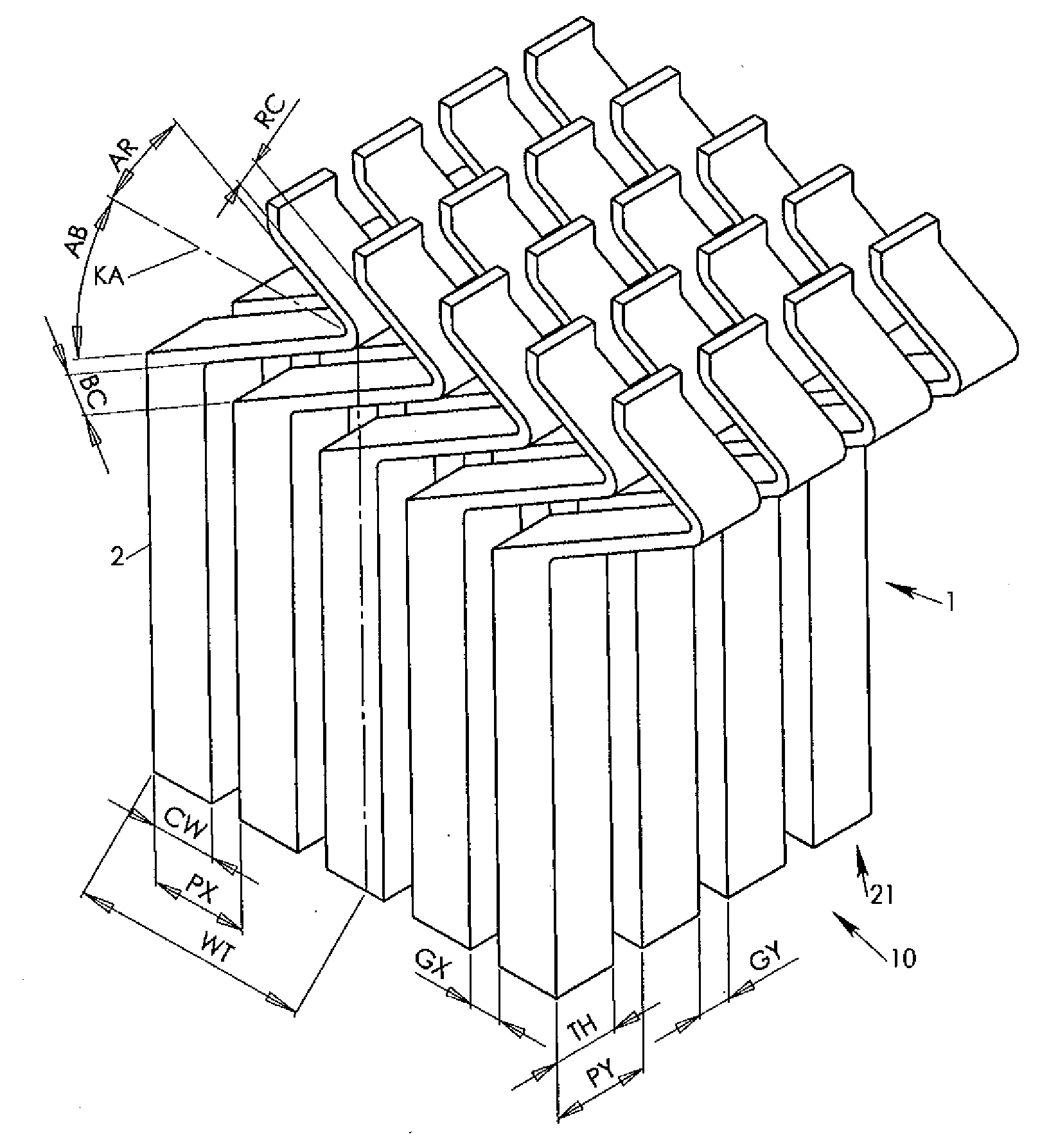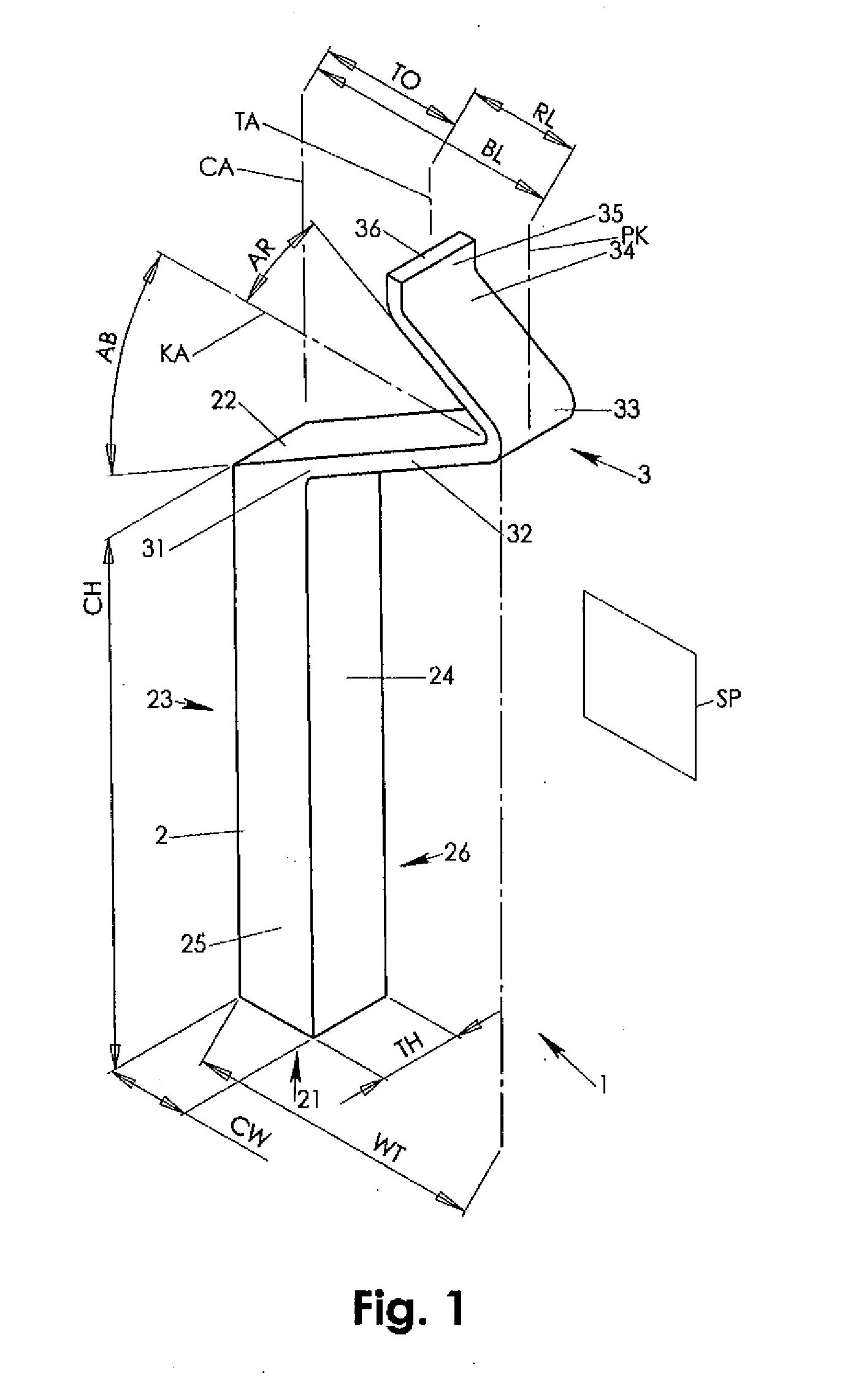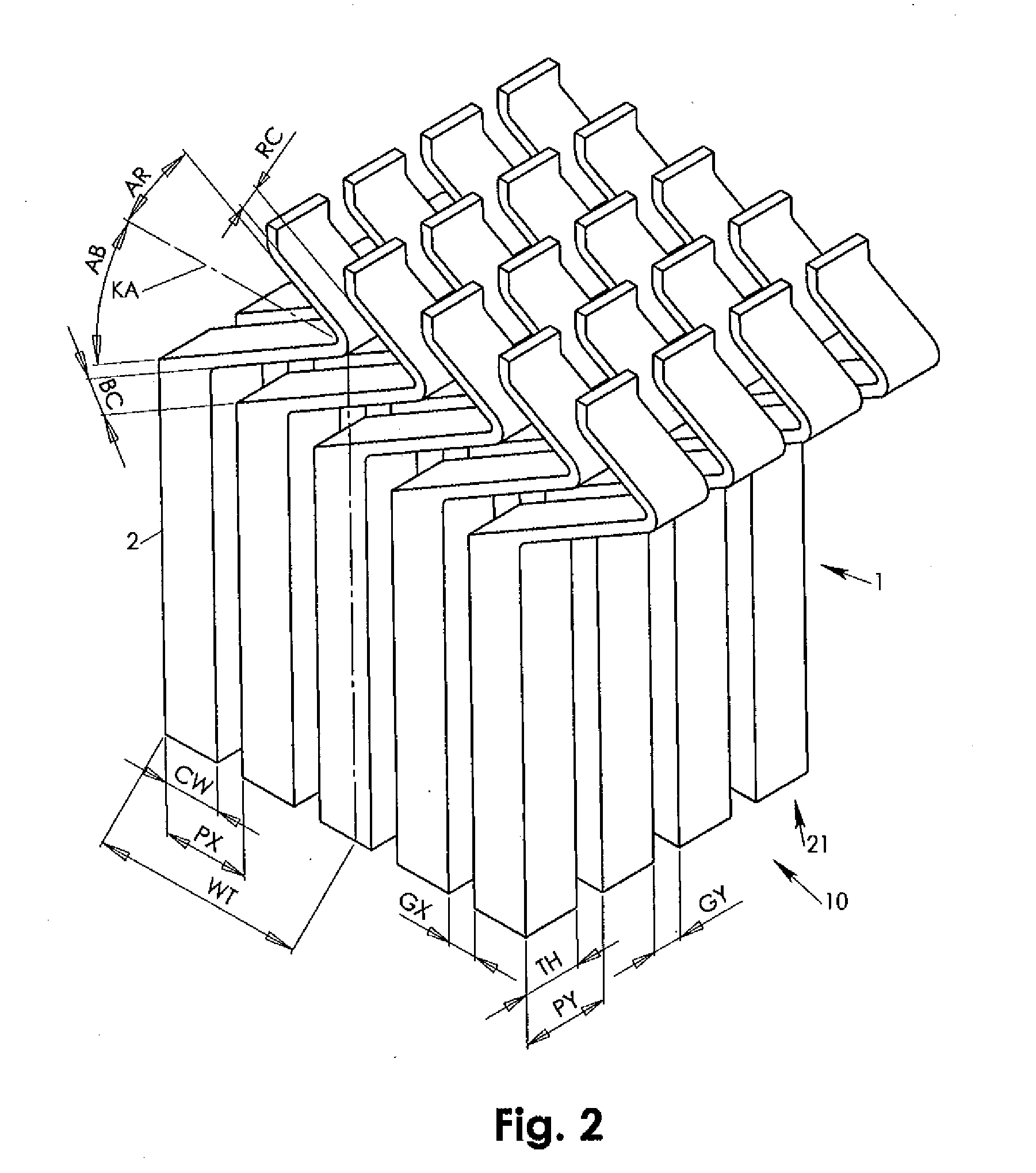Knee Probe Having Reduced Thickness Section for Control of Scrub Motion
a scrub motion and thickness section technology, applied in the field of vertical probes, can solve the problems of increasing increasing the difficulty of tuning the scrub motion irrespective, and the difficulty of buckling beam probe assembly with ever decreasing scale, so as to improve the control of scrub motion and reduce the length of the scrub
- Summary
- Abstract
- Description
- Claims
- Application Information
AI Technical Summary
Benefits of technology
Problems solved by technology
Method used
Image
Examples
Embodiment Construction
[0014]A preferably vertically assembled probe features a substantially rigid columnar structure and a connected suspension knee. The probe is held in assembly via its columnar structure. The suspension knee has a base arm laterally connecting at and propagating away from a connect end of the columnar structure. The base arm extends up to a lateral knee extension where a reverse arm continues from the base arm back in direction towards a central axis of the columnar structure. The reverse arm terminates in a contact tip in a tip offset to the column axis that is smaller than the lateral knee extension. During application of a contacting force onto the contact tip, a first deflection of the base arm and a second deflection of the reverse arm counter act in conjunction with base and reverse arms structural configuration. As a result, scrub motion may be well defined in direction and magnitude without need for additional guidance of the deflecting probe structure.
[0015]The entire probe ...
PUM
 Login to View More
Login to View More Abstract
Description
Claims
Application Information
 Login to View More
Login to View More - R&D
- Intellectual Property
- Life Sciences
- Materials
- Tech Scout
- Unparalleled Data Quality
- Higher Quality Content
- 60% Fewer Hallucinations
Browse by: Latest US Patents, China's latest patents, Technical Efficacy Thesaurus, Application Domain, Technology Topic, Popular Technical Reports.
© 2025 PatSnap. All rights reserved.Legal|Privacy policy|Modern Slavery Act Transparency Statement|Sitemap|About US| Contact US: help@patsnap.com



